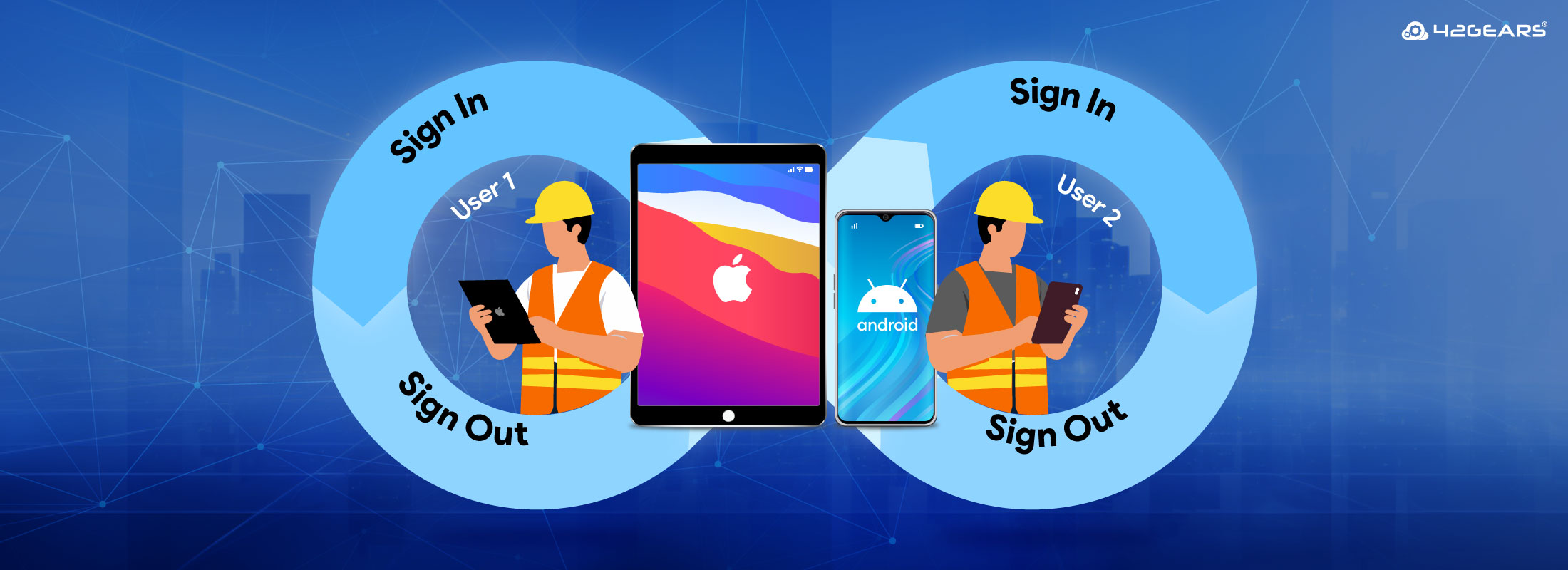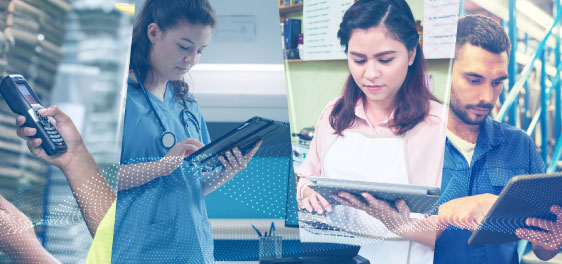Ultimate Guide to Shared Device Mode
Sep 18, 2025 | Vaijayanthi Narasimhan
Healthcare personnel, truck drivers, retail associates, and other frontline workers make up 61% of the global workforce. Yes, you read that right!
The frontline worker population is more than 1.8 billion. Now pause and think how much e-waste would be generated if businesses gave each frontline employee two or more devices (the average number of devices a worker uses) for work. To reduce e-waste and improve worker productivity, nearly three-fourths of organizations worldwide provide shared devices for their frontline employees.
One might wonder how a single device can handle multiple users without compromising speed, security, or data privacy. The answer is shared device mode.
This blog will walk you through everything you need to know about shared device mode—what it is, why it matters, and how businesses across industries are already using it to transform frontline operations.
What is Shared Device Mode?
Shared device mode is a feature typically delivered through Mobile Device Management tools like SureMDM to allow multiple users to securely access the same device without overlap or data leakage. Instead of assigning one phone or tablet to every employee, organizations can configure a single device to support different users, roles, and permissions.
Let’s take a scenario to understand how shared devices make frontline workers’ lives friction-free.
You walk into a busy hospital ward. A nurse picks a device from the dock, moves quickly, checks vitals, updates patient records, and hands over devices to the next shift worker. Within seconds, shared device mode helps get the device ready, personalized with the employee’s login details, apps, and secure access. By the time their shift ends, the same device is wiped clean and ready for the next nurse.
The best part about shared device mode is, when a user signs in, they see only the apps, settings, and data relevant to their role. Once they log out, their session ends, and the device resets to a clean slate for the next person.
In a nutshell, shared device mode means
- One device, multiple users.
- Personalized access, but only when logged in.
- Secure access into every session.
Why Enterprises Need Shared Device Mode
1. Cost Optimization
Buying dedicated devices for every employee is expensive. Shared Device Mode allows businesses to maximize device usage across shifts, justifying the purchase of the devices and significantly reducing hardware costs.
2. Security for the Organization & Employees
Shared devices come with enterprise-grade security. Once a user signs out, all their data and credentials are wiped automatically, reducing the risk of data leaks and privacy breaches.
3. Single Sign-On (SSO) Advantage
With SSO (Single Sign-On) integrated into Shared Device Mode, workers don’t need to remember multiple passwords to use different applications. They log in once and gain access to all authorized apps. This largely reduces login friction, boosts productivity, and minimizes IT helpdesk calls.
4. Faster Onboarding for Frontline Teams
For industries like healthcare, retail, education, and manufacturing, where turnover and shift rotations are high, Shared Device Mode makes onboarding new staff seamless. Employees simply log in with their credentials and start working immediately without the need for lengthy device setups.
5. Remote Management
Shared Device Mode can be managed through a Unified Endpoint Management (UEM) platform, allowing IT to control updates, enforce policies, and monitor devices remotely. This reduces the IT burden by avoiding on-site troubleshooting visits.
6. Asset Visibility
Enterprises can have full visibility into who is using a device, the location of a device, and performance metrics that help with predictive maintenance.
Key Features of Shared Device Mode
- Multi-user device configuration: Devices can securely switch between multiple users.
- SSO integration: One login to use all IT-authorized apps.
- Role-based access: Different users see different apps and permissions based on their roles.
- Session management: Automatic sign-out after shifts to prevent data leaks.
- Remote management: IT can track, lock, or wipe devices remotely.
- Kiosk mode support: Limit access to work-related apps only.
Real-World Use Cases
Healthcare
Nurses and doctors can share tablets across shifts to securely access patient information and hospital systems.
Retail
Store associates can log in to any available device to check inventory, process orders, and assist customers to ensure a smooth experience.
Manufacturing & Logistics
Shared rugged devices allow shift workers to track workflows, scan barcodes, and log activities without needing personal devices.
Education
Schools can deploy tablets for students, where each student logs in for their class session, and the device resets afterward.
Shared Device Mode is the Future of Work Devices
Frontline employees are called frontline for a reason; don’t push their needs to the backseat. Enable shared device mode today to give your frontline employees fast and secure access to technology that also makes your IT team's lives much easier.
Enable Shared Device Mode.
Boost Frontline Productivity
Subscribe for our free newsletter


